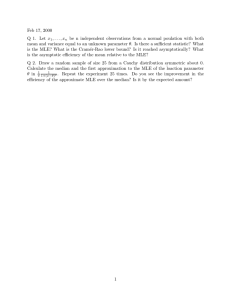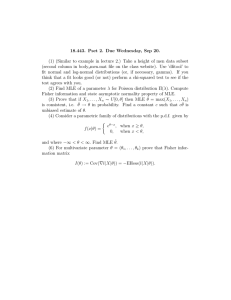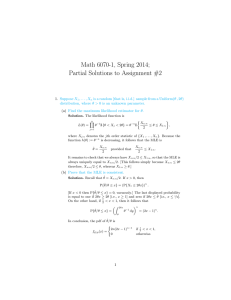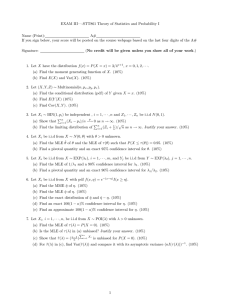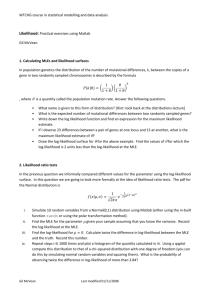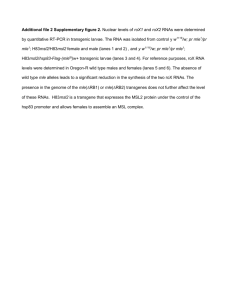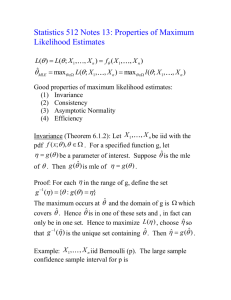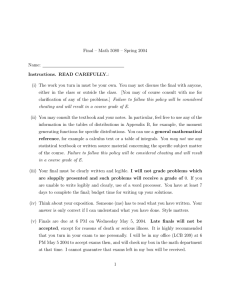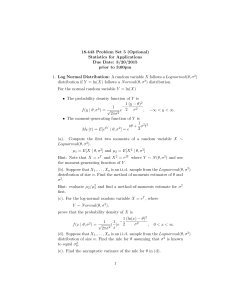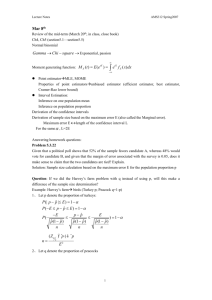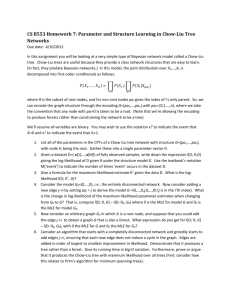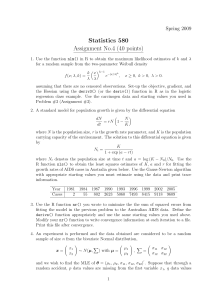Exercises Data Mining Lecture 1
advertisement
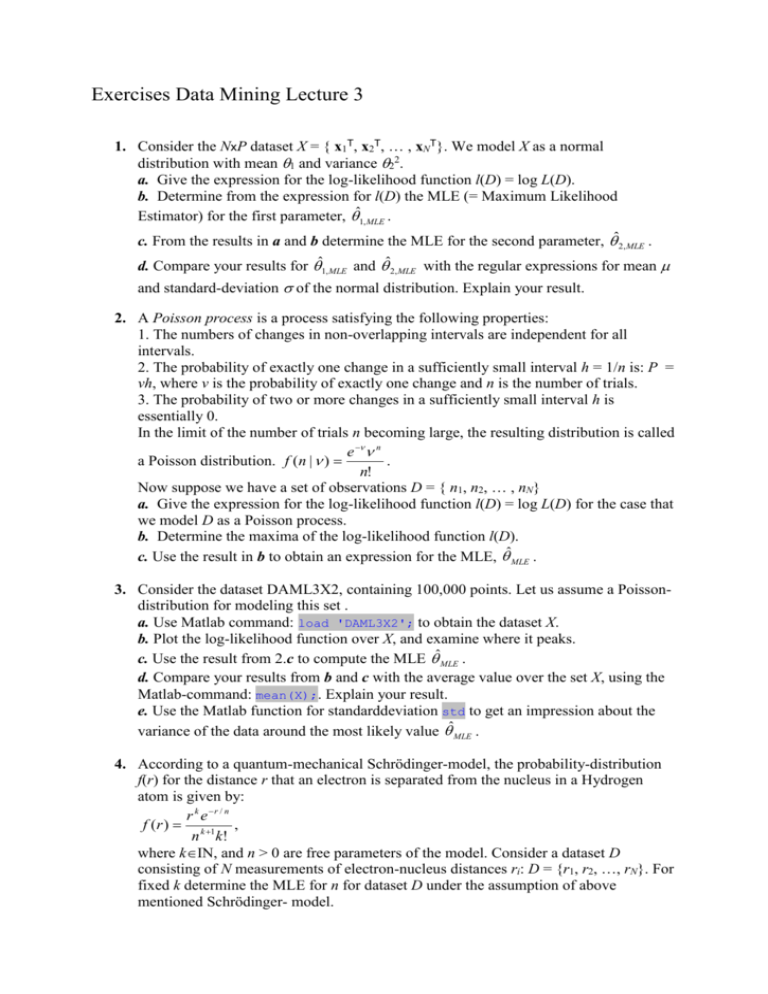
Exercises Data Mining Lecture 3
1. Consider the NxP dataset X = { x1T, x2T, … , xNT}. We model X as a normal
distribution with mean 1 and variance 22.
a. Give the expression for the log-likelihood function l(D) = log L(D).
b. Determine from the expression for l(D) the MLE (= Maximum Likelihood
Estimator) for the first parameter, ˆ1, MLE .
c. From the results in a and b determine the MLE for the second parameter, ˆ
2, MLE
.
d. Compare your results for ˆ1, MLE and ˆ2,MLE with the regular expressions for mean
and standard-deviation of the normal distribution. Explain your result.
2. A Poisson process is a process satisfying the following properties:
1. The numbers of changes in non-overlapping intervals are independent for all
intervals.
2. The probability of exactly one change in a sufficiently small interval h = 1/n is: P =
vh, where v is the probability of exactly one change and n is the number of trials.
3. The probability of two or more changes in a sufficiently small interval h is
essentially 0.
In the limit of the number of trials n becoming large, the resulting distribution is called
e n
a Poisson distribution. f (n | )
.
n!
Now suppose we have a set of observations D = { n1, n2, … , nN}
a. Give the expression for the log-likelihood function l(D) = log L(D) for the case that
we model D as a Poisson process.
b. Determine the maxima of the log-likelihood function l(D).
c. Use the result in b to obtain an expression for the MLE, ˆMLE .
3. Consider the dataset DAML3X2, containing 100,000 points. Let us assume a Poissondistribution for modeling this set .
a. Use Matlab command: load 'DAML3X2'; to obtain the dataset X.
b. Plot the log-likelihood function over X, and examine where it peaks.
c. Use the result from 2.c to compute the MLE ˆMLE .
d. Compare your results from b and c with the average value over the set X, using the
Matlab-command: mean(X);. Explain your result.
e. Use the Matlab function for standarddeviation std to get an impression about the
variance of the data around the most likely value ˆMLE .
4. According to a quantum-mechanical Schrödinger-model, the probability-distribution
f(r) for the distance r that an electron is separated from the nucleus in a Hydrogen
atom is given by:
r k e r / n
f (r ) k 1 ,
n k!
where kIN, and n > 0 are free parameters of the model. Consider a dataset D
consisting of N measurements of electron-nucleus distances ri: D = {r1, r2, …, rN}. For
fixed k determine the MLE for n for dataset D under the assumption of above
mentioned Schrödinger- model.
